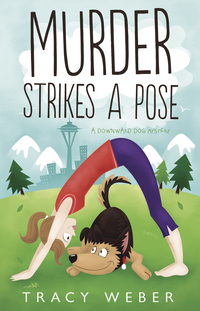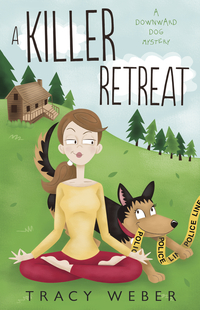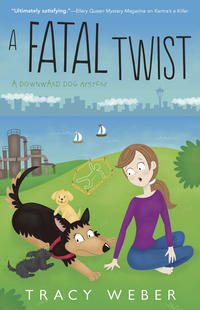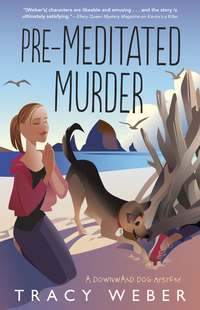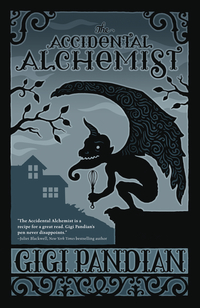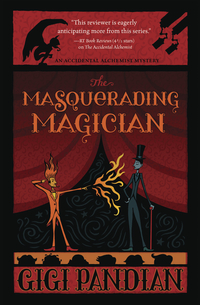Thursday, December 13, 2018
eBook Deals: Grab the First Five Books of the Downward Dog Mystery Series on Sale, Starting at $0.99!
Everyone loves a deal! for a limited time, grab the first five ebooks of the Downward Dog Mystery Series by Tracy Weber while they're on sale!
Friday, December 7, 2018
North...to Alaska: A Guest Post from CATCH ME IF YUKON Author Maddy Hunter
Alaska became our 49th state when I was in grade school, but I didn't visit it until I needed research material for the next book in my Passport to Peril mystery series, Catch Me if Yukon. (I realize the Yukon isn't in Alaska, but the title was too good to pass up.) I wasn't surprised by the glorious scenery or the fact that people could live in extremely remote areas and actually flourish, but I was surprised by a couple of things that I'd like to share with you.
There were no mosquitoes!
(Okay, there was one rogue mosquito lurking in the bathroom of our cabin in Denali, but it was flying solo.) People had warned me that mosquitoes in Alaska were at least an inch long and so numerous that they traveled in death squads. (Perhaps they were thinking of Lapland, where hats with mosquito netting are a welcome addition to the fashionable tourist's wardrobe.) Happily, all the bug spray I'd packed went unused. There were more mosquitoes in my little flower garden in Wisconsin last summer than in the whole state of Alaska.
Alaska has an unexpectedly international flavor. Who knew?
I'd imagined rugged mountain men types. Flowing beards. An array of suspenders. Twangy speech. What I found was a portly restaurateur with a charming accent who was seated at a cooking station in the middle of his eatery in Seward, whipping up crepes and Belgian waffles as if he were demonstrating the technique in a storefront window. And the reason why Belgian waffles were his specialty? He was an immigrant. From Belgium.
In a town called Girdwood we ate in a restaurant named The Bakery, which offered outdoor seating amid a profusion of hanging baskets and oversized flower pots. It reminded me of the iconic restaurant in Oberammergau, Germany, whose balconies dripped with flowers. After reading the headlines of a framed newspaper inside the restaurant, I learned the reason why The Bakery reminded me of Europe. Its owner had emigrated from…Germany.
Near Girdwood we participated in a dog mushing adventure, run by a young man who was an annual contestant in the Iditarod. He spoke with an accent I couldn't identify, so when I asked him where he was from, he said Normandy. And not Normandy, Texas or Normandy, Tennessee. Normandy, France. An Alaskan dog musher from Normandy, France. Seriously. How does that happen?
Farther north, in Denali, the only road that snakes through the national park terminates at a resort whose dining hall is almost as big as the park itself. There's an army of wait staff who scurry around the room, refilling chafing dishes and clearing tables, but there's so little help available domestically, the resort is forced to hire workers from Eastern Europe. I tried speaking to our waitress, but she spoke so little English that our conversation was limited to smiles and hand gestures, which no doubt explains why buffet-style is the meal plan of choice at the facility.
In a little place called Healy, we crammed into a muddy UTV and drove three bumpy miles into the woods to arrive at our zip-lining venue, where our instructor for the adventure turned out to be a young woman from…wait for it…Bulgaria! She traveled to Alaska on a work visa, fell in love with a man and married him, so she was there permanently.
I came to the conclusion that foreign visitors find Alaska so hypnotic that they decide to stay. So if you happen to be passing through out 49th state, don't be surprised if you hear a delightful assortment of languages and accents. If you stay long enough, you might even hear the hard vowel sounds of a few transplanted Midwesterners. The two bus drivers who transported us through Denali and down the road to Healy? Turns out they used to live right down the street from me in Wisconsin. Go figure.
***
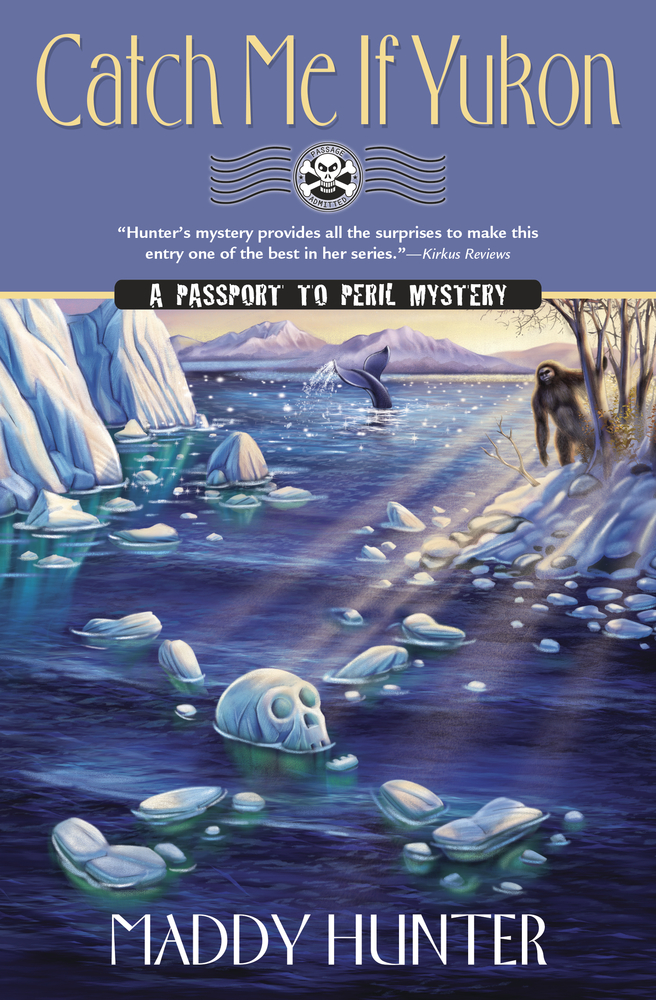 Emily and her traveling seniors must solve yeti nother mystery as they trek through the Alaskan wilderness
Emily and her traveling seniors must solve yeti nother mystery as they trek through the Alaskan wildernessAs tour escort Emily Andrew-Miceli leads her globetrotting band of Iowa seniors into the wilds of Alaska, she discovers that whales aren't the only killers on the prowl. When a tour member turns up dead on a mountainous hiking trail, Emily blames herself for the mishap—until she learns that something far hairier might be the cause.
One of the seniors snaps a photo of what looks like Bigfoot, raising questions about what happened to the victim. But the elusive sasquatch is just a legend, isn't it? Between whale watching in the glacial waters near Seward and ziplining in the primal forests of Denali, Emily finds herself locked in a game of cat and mouse with a killer who may or may not be mere myth.
Praise for the Passport to Peril Mystery Series:
"A bit of humor, a bit of travel information and a bit of mystery add up to some pleasant light reading."—Kirkus Reviews
"The cast of characters is highly entertaining and the murder mystery mixed with good humor!"—Suspense Magazine
"Maddy Hunter's Passport to Peril series is a first-class ticket to entertainment."—Carrie Bebris, award-winning author of the Mr. & Mrs. Darcy Mystery series
Maddy Hunter has endured disastrous vacations on three continents in the past five years. The first six titles in the Passport to Peril Mystery series are available from Pocket Books; books seven through twelve are available through Midnight Ink Books. The first in the series, Alpine for You, was an Agatha Award finalist and a Daphne du Maurier Award finalist. Also, Hula Done It?, Pasta Imperfect, and Top O' the Mournin' were named to the Independent Mystery Bookseller's Association bestseller list. The author resides in Madison, Wisconsin. For more information, go to MaddyHunter.com.
That Crazy Little Thing Called Plot: A Guest Post from SECOND GOODBYE Author Patricia Smiley
Buried deep inside a file drawer in my office is a folder filled with yellowing true-crime newspaper clippings meant to inspire the plot of my next novel. The only problem is once they're neatly clipped and stored I rarely look at them again. Mostly, my books are created from a disparate array of alluring subjects and events I've experienced firsthand. This process is especially true for the genesis of Second Goodbye.
Like most authors, I embrace my characters. Davie Richards is a gutsy, principled, but flawed second-generation LAPD detective who’s devoted to seeking justice for murder victims. The people who inhabit her world—Bear, Vaughn, and Frank Giordano—captivate me. I care about what happens to all of them, including those who were never meant to have an afterlife beyond one novel. But there was one character I just couldn't jettison—LAPD Homicide-Special Detective Jon Striker. Striker worked a case with Davie in Outside the Wire, but after the novel ended, his back-story was still mostly unknown, especially the origin of that mysterious tattoo on his arm. All I initially knew about Second Goodbye was that Striker would feature prominently.
Around this time, I attended a fan convention in New Orleans where I met a cop who suggested I look into suicides in gun stores for possible plot ideas. It was an intriguing idea that eventually became an essential element of the book.
Money laundering has always fascinated me. I earned an MBA, so I know about balance sheets and profit-and-loss statements. I also worked for fifteen years as a volunteer and Specialist Reserve Officer for the Los Angeles Police Department, including five years assigned to the detective squad room, investigating financial crimes. On the surface, the basics of washing dirty cash seemed straightforward. But the intricacies were more difficult to chart, which is the whole point if you're a crook. I began researching the issue until I felt comfortable incorporating a money-laundering scheme into the story.
Ideas for Second Goodbye began stacking up. I had Striker, a death in a gun store, and money laundering. While working on the manuscript, I went on a sailing trip to the British Virgin Islands and learned that the area was a money-laundering haven for criminals transferring cash to and from the mainland and complicit local banks. That's when the plot "thickened." Just as it had in Outside the Wire, Davie's investigation becomes too complex to handle at Pacific Division and is transferred downtown to Homicide-Special, where she and Striker again partner to solve the case. Accordingly, they follow the money to the island of Tortola.
Every author has a unique writing process. For me, the plot comes together at random when I keep my eyes and subconscious open to crazy little ideas—even while on a sailboat in the BVIs.
***
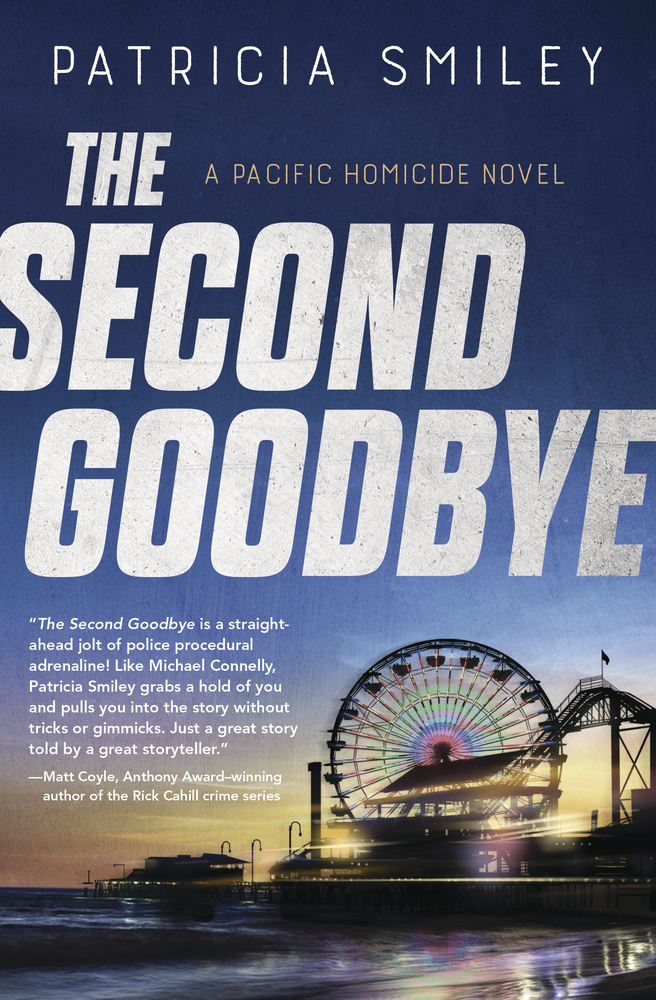
Assume nothing—that's the touchstone for every homicide investigation Detective Davie Richards undertakes. She approaches her latest case the same way, determined to learn as much about the victim as she does about the killer. But there's nothing about thirty-four-year-old Sara Montaine or her death that makes sense.
Was Sara a saint caring for her dying husband or a gold-digger with a sketchy background? Did she commit suicide or was she murdered? Before her marriage, Sara lived comfortably without any obvious source of income, unusual for an orphan raised in foster care. As Davie digs deeper, she unearths Sara's troubled past and a viper's nest of villains who are willing to kill to keep their secrets hidden.
Praise:
"Sassy and analytical, L.A. Detective Davie Richards utilizes 'shoe leather and minutiae' to unravel a brilliantly staged fake suicide. Seamless prose, tightly crafted clues, and surprising twists make LThe Second Goodbye a memorable police procedural. Brew the coffee for the graveyard shift, as you'll be up all night reading."
—K.J. Howe, best-selling author of The Freedom Broker and Skyjack
"Patricia Smiley tackles Michael Connelly territory and succeeds with a realistic, compelling police procedural in the badlands of contemporary Los Angeles. Detective Davie Richards is a smart, no-nonsense heroine, and the storytelling had me turning the pages at the expense of mundane activities like sleeping. The Second Goodbye is an intriguing mystery laced with well-researched law enforcement practices."
—Raymond Benson, author of In the Hush of the Night and The Black Stiletto Serial
"The Second Goodbye is a straight ahead jolt of police procedural adrenaline! Like Michael Connelly, Patricia Smiley grabs a hold of you and pulls you into the story without tricks or gimmicks. Just a great story told by a great storyteller. The Second Goodbye catapults Smiley onto the top tier of crime writers!"
—Matt Coyle, Anthony Award-winning author of the Rick Cahill crime series
Patricia Smiley is a bestselling mystery author whose short fiction has appeared in Ellery Queen Mystery Magazine and Two of the Deadliest, an anthology edited by Elizabeth George. Patricia has taught writing classes at various conferences throughout the US and Canada, and she served on the board of directors of the Southern California Chapter of Mystery Writers of America and as president of Sisters in Crime/Los Angeles. Visit her online at www.PatriciaSmiley.com.
Wednesday, December 5, 2018
eBook Deals: Grab the First 3 Accidental Alchemist Books, Starting at Just $0.99!
Everyone loves a deal! for a limited time, grab the first three ebooks of the Accidental Alchemist Mystery Series by Gigi Pandian while they're on sale!
Monday, November 26, 2018
The Great Christmas Cookie Debate: A Guest Post from AS THE CHRISTMAS COOKIE CRUMBLES Author Leslie Budewitz
You’d think it would be pretty obvious, right—what's a Christmas cookie and what isn’t?
Alas, no.
Years ago, I participated in a Christmas cookie exchange hosted by a woman I worked with. Trays of spritz, gingerbread boys, and sugar cookies in festive shapes covered her dining room table.
And there, among them, sat a plate of peanut butter cookies. Not just any peanut butter cookies, but flat, stretched-out cookies too crisp from over-baking.
Ho, ho, ho, and no, no, no!
The memory of that sad plate, alone on the table after all the candy cane cookies and jam thumbprints had been snatched up, prompted me to include a cookie exchange in As the Christmas Cookie Crumbles, fifth in my Food Lovers' Village Mysteries. I've been as surprised as Erin Murphy, my main character, to discover that not everyone agrees with her about Christmas cookies.
Don't get us wrong. We both love peanut butter cookies, and the flourless version her young cousin Molly brings to the Murphys' annual friends-and-family cookie exchange is yummy and easy. We bow to no one in our love of a good chocolate chip cookie. And snickerdoodles? Joy, rolled in cinnamon sugar.
But they aren’t Christmas cookies.
What, to Erin, me, and our mothers, makes a cookie a Christmas cookie? Some are clearly seasonal—only an author testing a recipe is likely to color dough red and twist it into candy canes in June. Christmas cookies feature an ingredient not used in an everyday cookie. Fruit cake has long been relegated to December—or in some households, to the trash bin, but I don't hold with that either—so that's when fruitcake cookies or bars surface. Candied fruit, dates, and nuts are holiday staples.
A gingerbread boy or girl served any other time of year? Just plain wrong. A sugar cookie in the shape of a star or a bell, trimmed with frosting or sprinkles? You know I'm right. And spritz? Case closed.
Have you ever eaten a jam thumbprint any other time of year? Me, neither. Other cookies are holiday stars in certain European traditions—pfeffernusse, Berlinkranzer, lebkuchen, pizzelles.
Then there's the snowball and its pseudonyms—Russian tea cakes, Mexican wedding cakes, and pecan sandies. So important to the holiday that they even play a role in my latest mystery. I can hardly wait to try the "Dirty Snowball" one reader created by adding cocoa powder added to the powdered sugar. But I will wait, until December 1.
And we haven't even talked about fudge, divinity, or peppermint bark.
Now it has been brought to my attention that some cookbooks call the snickerdoodle a Christmas cookie. If it meets your criteria for special, and you only make it in December, then by all means, go ahead and give it that jolly label. After all, traditions do vary. Frankly, I think you'd be unnecessarily depriving yourself of the joy of those little balls of crackly dough wrapped in sugar and spice and everything nice the rest of the year.
Or maybe that just leaves more for me. And Erin. And you, if you stop by. Because no matter what the cookie, no matter what the season, cookies taste better when they're shared.
***

Erin is one smart cookie, but can she keep the holiday spirit—and herself—alive till Christmas?
In Jewel Bay, all is merry and bright. At Murphy's Mercantile, AKA the Merc, manager Erin Murphy is ringing in the holiday season with food, drink, and a new friend: Merrily Thornton. A local girl gone wrong, Merrily has turned her life around. But her parents have publicly shunned her, and they nurse a bitterness that chills Erin.
When Merrily goes missing and her boss discovers he's been robbed, fingers point to Merrily—until she's found dead, a string of lights around her neck. The clues and danger snowball from there. Can Erin nab the killer—and keep herself in one piece—in time for a special Christmas Eve?
Includes delicious recipes!
Praise:
"Budewitz's finely drawn characters, sharp ear for dialogue, and well-paced puzzle make Jewel Bay a destination for every cozy fan."
—Kirkus Reviews
"Clean-as-a-whistle dialogue, endearing characters, and a solid plot make this cozy a winner."
—Publishers Weekly
"Cozy readers will relish the small-town, Christmastime frame accompanying details of frenzied wedding planning and running a family food business. And, of course, recipes, too."
—Booklist
Leslie Budewitz blends her passion for food, great mysteries, and the Northwest in the Seattle Spice Shop Mysteries and the Food Lovers' Village Mysteries, set in Jewel Bay, Montana. The 2015-16 president of Sisters in Crime and first author to win Agatha Awards for both fiction and nonfiction, she lives and bakes in NW Montana.
Friday, November 9, 2018
Cats, Florida, and the Tarot: A Guest Post from FOOL'S MOON Author Diane A.S. Stuckart
Cats. Florida. Tarot.
Those three words are the soul of Fool's Moon, the first in my new Tarot Cats Mystery series. It's been one of my favorite books ever to write, mostly because each of those words has special meaning to me. And since this is a "get to know you" kind of blog post, let me explain so you can learn about me, as well as about my series.
Cats. I grew up as a Crazy Cat Kid (can I trademark that phrase?). Numerous of my childhood photos show me carrying, petting, or otherwise engaging with a feline. Unfortunately, my parents weren't exactly animal lovers, which meant that when I grew up that I surrounded myself with critters.
My current clowder (the official term for tons o' cats) consists of my orange tabby brothers, Butch and Sundance, and sibling black cats Brandon Bobtail and Ophelia. And, yes, the latter pair are the inspiration for Brandon and Ophelia in Fool's Moon. But as plotting circumstances worked out, the personalities of my real life kitties and their fictional counterparts swapped themselves. The Brandon in Fool's Moon is smart and levelheaded. Real life Brandon is a loving but feisty little (well, big) butthead. Similarly, the real life Ophelia is sweet and mostly defers to her brother, while fictional Ophelia is the mouthy one.
Florida. I've lived in South Florida for more than a dozen years now, moving from Texas, where I was born and lived most of my life. Being a Texas native has always been a crucial facet of my identity, in part because our ranks are dwindling as more people move to the Lone Star State. I have found, however, that the Sunshine State has a similar pride of birth, with even fewer native Floridians to be found. The folks here are equally independent (remember that the Keys once seceded from the nation), and even more of a cultural mix, from Native Americans to Cubans to Haitians to New Yorkers. Perhaps it's that mix that makes the state more than a little quirky (when was the last time someone in Connecticut tossed a live gator through a fast food drive-thru window?). And that quirkiness made me eager to set the Tarot Cats Mysteries here in my new home.
Tarot. I've been fascinated by the Tarot ever since I was a teen in the 70s. As a storyteller, I'm drawn to its "hero's journey" imagery and the deep symbolism of the cards. However, like my human protagonist in Fool's Moon, Ruby Sparks, I don't see Tarot decks and Tarot readers as anything supernatural. As Ruby would tell you, the Tarot is simply a tool for self-discovery.
But what's this about cats reading Tarot in Fool's Moon? Yep, Ophelia learns to interpret the cards by watching Ruby and thinks she does a much better job of it than her human. And, full circle, her readings serve to set her and Brandon off on a literal journey of their little part of Florida.
***
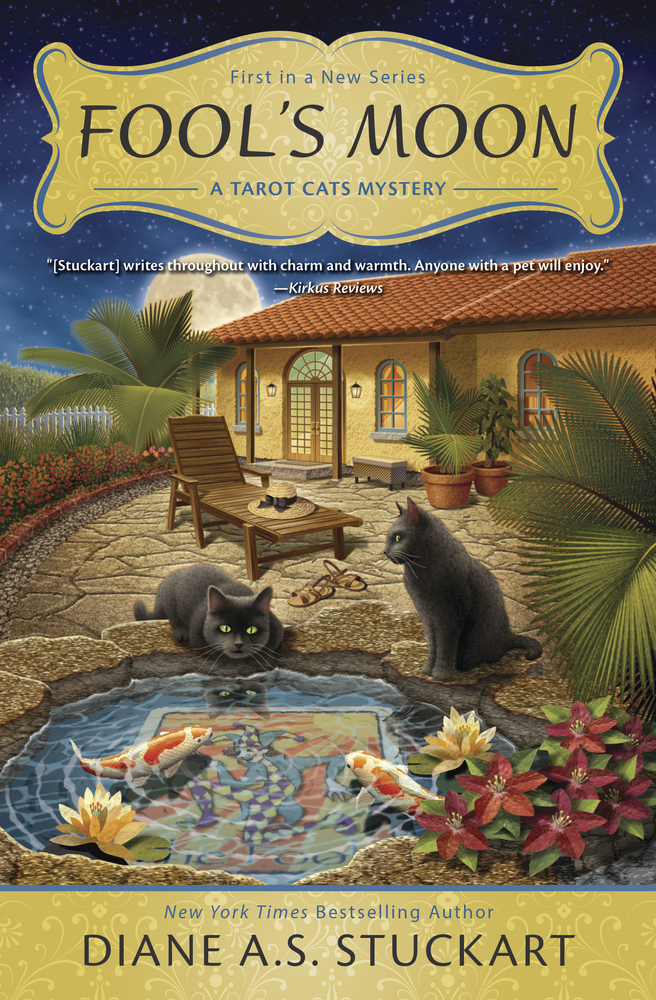 Two tarot-savvy cats and their tenderhearted human outwit a cruel criminal in this animal-centric whodunit.
Two tarot-savvy cats and their tenderhearted human outwit a cruel criminal in this animal-centric whodunit.Most days, Ruby Sparks feels like the sign that says "Tarot Card Reader Extraordinaire" should say "Tarot Card Reader Fairly Competent." But as challenging as it is to take care of her half-sister's New Age shop—and her growing menagerie of enchanted pets—Ruby never worries that she's bitten off more than she can chew...until a customer wants her to divine the truth about a murder.
When her own life is threatened with a double dose of danger, Ruby begins to wonder if she's being played for a fool. Luckily, she has Ophelia and Brandon—sibling black cats with a talent for tarot—and a feisty pit bull friend who all lend a paw in collaring the culprit before Ruby finds herself taking her final cat nap.
Praise:
"[Stuckart] writes throughout with charm and warmth. Anyone with a pet will enjoy."
—Kirkus Reviews
Diane A.S. Stuckart is the New York Times bestselling author of the Black Cat Bookshop Mystery series. She's also the author of the award-winning Leonardo da Vinci historical mysteries, as well as several historical romances and numerous short stories. Her Tarot connection is even more sprawling. She's been an on-and-off student of Tarot since she was a teenager, though she confesses to being more of a collector of decks than a reader. She will, however pull out the cards for a friend on occasion.
Diane has served as Chapter President of the Mystery Writers of America Florida chapter, is a member of the Cat Writers' Association, and also belongs to the Palm Beach County Beekeepers Association. She lives west of West Palm Beach with her husband, dogs, cats—including the real-life Brandon Bobtail and Ophelia—and a few beehives. Visit her online at http://www.tarotcats.com.
Friday, November 2, 2018
Inspiration from...Beyond? A Guest Post from A VINTAGE DEATH Author Mary Ellen Hughes
When I started putting together my thoughts about a new mystery series, I knew that at least two elements would be in it: a female protagonist and a small town setting. I had nothing more than that, but little by little ideas began to form. One of the basic "rules" of fiction writing is to write what you know. This can refer to what you already know or to what you can research and learn. I started with things I knew and sifted through them for something intriguing. A story I'd heard some years ago fit that bill.
There's a very old house down the road from me. Old enough to be historical, but in a small way, meaning George Washington never slept there. The couple that bought it happened to move in on a stormy night—yes, a dark and stormy night! This old house had a few pieces of furniture left behind, and as the couple carried in their boxes, they heard a very faint sound of music. They eventually tracked it down to an old, roll-top desk, which was closed and locked.
The husband managed to pry it open, and inside they found an old music box—which was playing. Nobody had wound it, of course, so it was a bit spooky, to say the least. They eventually decided that "Gerard," a long-ago deceased owner who may or may not have been seen on the premises over the years, had welcomed them, and they took it as a very positive sign.
That story stayed with me, and I decided to work it into my new Keepsake Cove series. I set A Fatal Collection in a collectible music box shop. My protagonist's Aunt Melodie, who dies early in the story, seems to communicate at crucial times to her niece, Callie, through her favorite music box. Or does she? Callie never knows for sure, but she kind of likes the idea of being looked after in that way.
With that start, I created Keepsake Cove, a town-within-a-town of shops that specialize in all kinds of collectibles, including the music box shop. The shopkeepers seem to be good people. Or are they? This is a mystery, of course, and bad things have to happen. Once I had my beginning, I was on a roll, and all because of that mysterious music box playing on its own one night many years ago.
A Fatal Collection is now followed by A Vintage Death. I hope you'll want to find out if the music box continues to warn Callie (if that’s what it's actually doing,) and meet the new people who've come to Keepsake Cove. One of them happens to be an author, who I enjoyed creating from a mix of the many different authors I've met over the years. Will you recognize them? Maybe not, since I've also added ingredients from my imagination. But they definitely helped inspire me as I once again followed the rule of "write what you know."
The intriguing thing to me is how "what you know" can quickly turn into something you never imagined before. But that's all part of the fun of writing fiction!
***
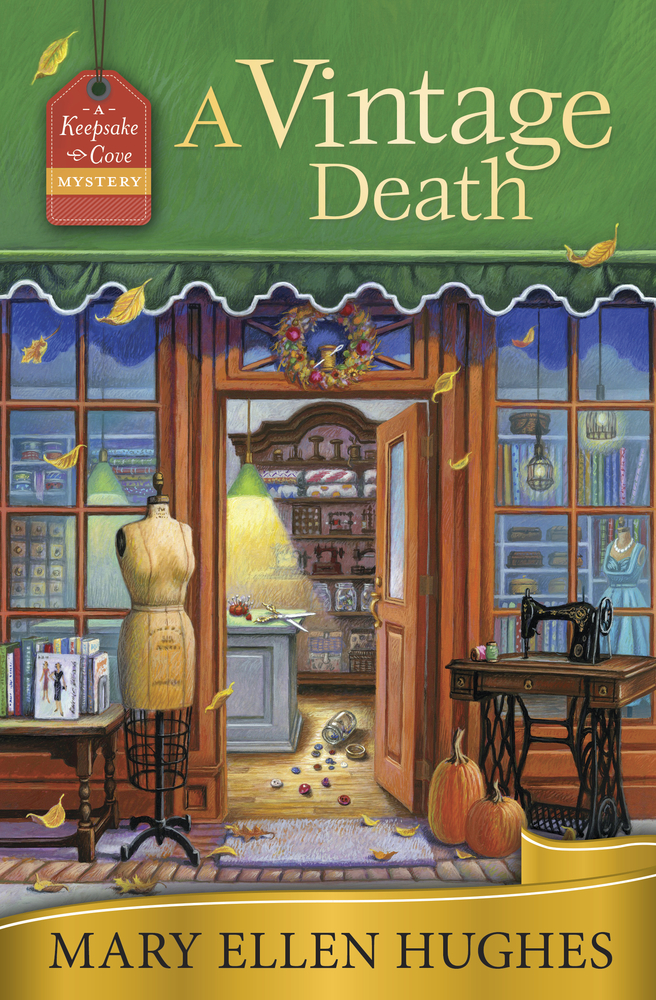 Callie Reed has put together a special event, but a killer is ripping it apart at the seams
Callie Reed has put together a special event, but a killer is ripping it apart at the seamsAs the new owner of a music box store in Keepsake Cove, a quaint town full of collectible shops on Maryland's Eastern Shore, Callie Reed is eager to get more involved in her community. So she volunteers to plan the fall street decorations and welcome a visiting author who's come for a special book signing. But the celebratory mood is cut short when the local B&B owner is found dead, killed with a pair of vintage scissors.
Suspicion is cast on the victim's estranged wife, Dorothy, who owns Keepsake Cove's vintage sewing shop. Callie is sure Dorothy is innocent, and the visiting author agrees. Together, they begin their own investigation, only to discover that many people in Keepsake Cove have secrets. Secrets that are worth killing to keep.
Praise for the Keepsake Cove Mystery Series:
"Hughes kicks off her new Keepsake Cove series with a charming locale."
—Kirkus Reviews
Mary Ellen Hughes is the bestselling author of the Pickled and Preserved Mysteries (Penguin), the Craft Corner Mysteries, and the Maggie Olenski Mysteries, along with several short stories. A Fatal Collection is her debut with Midnight Ink. Visit her at www.MaryEllenHughes.com.
Subscribe to:
Posts (Atom)

